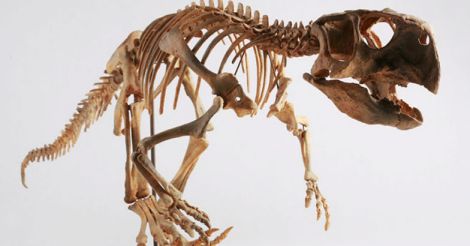Color patterns, known as countershading, in Psittacosaurus -- a long-lost species of dinosaur -- protected them from predators, finds a new study.
Psittacosaurus was light on its underside and darker on top and most likely lived in an environment with diffuse light, such as in a forest.
Psittacosaurus had horns on either side of its head and long bristles on its tail and lived in the early Cretaceous period in China and has been found in the same rock strata where many feathered dinosaurs have been found.
"The fossil, which is on public display at the Senckenberg Museum of Natural History in Germany, preserves clear countershading, which has been shown to function by counter-illuminating shadows on a body, thus making an animal appear optically flat to the eye of the beholder," said Jakob Vinther of the Schools of Earth Sciences and Biological Sciences in the study published in the journal Current Biology
"By reconstructing a life-size 3D model, we were able to not only see how the patterns of shading changed over the body, but also that it matched the sort of camouflage which would work best in a forested environment," said Innes Cuthill, Professor at the University of Bristol in Britain.
Vinther realized that structures previously thought to be artifacts or dead bacteria in fossilized feathers were actually "melanosomes" -- small structures that carry melanin pigments found in the feathers and skin of many animals.
In order to investigate what environment the Psittacosaurus had evolved to live in, the researchers took another cast of the model and painted it all gray.
They then placed it in the Cretaceous plant section of Bristol Botanic Garden and photographed it under an open sky and underneath trees to see how the shadow was cast under those conditions.
By comparing the shadow to the pattern in the fossil they could then predict what environment the Psittacosaurus lived in.
"We predicted that the Psittacosaurus must have lived in a forest. This demonstrates that fossil colour patterns can provide not only a better picture of what extinct animals looked like, but they can also give new clues about extinct ecologies and habitats," Vinther added.
The researchers found how well these color patterns actually worked to camouflage the dinosaur.
The researchers say that they would now like to explore other types of camouflage in fossils and to use this evidence in understanding how predators could perceive the environment and to understand their role in shaping evolution and biodiversity.
(With agency inputs)
























 Remains of the Psittacosaurus
Remains of the Psittacosaurus